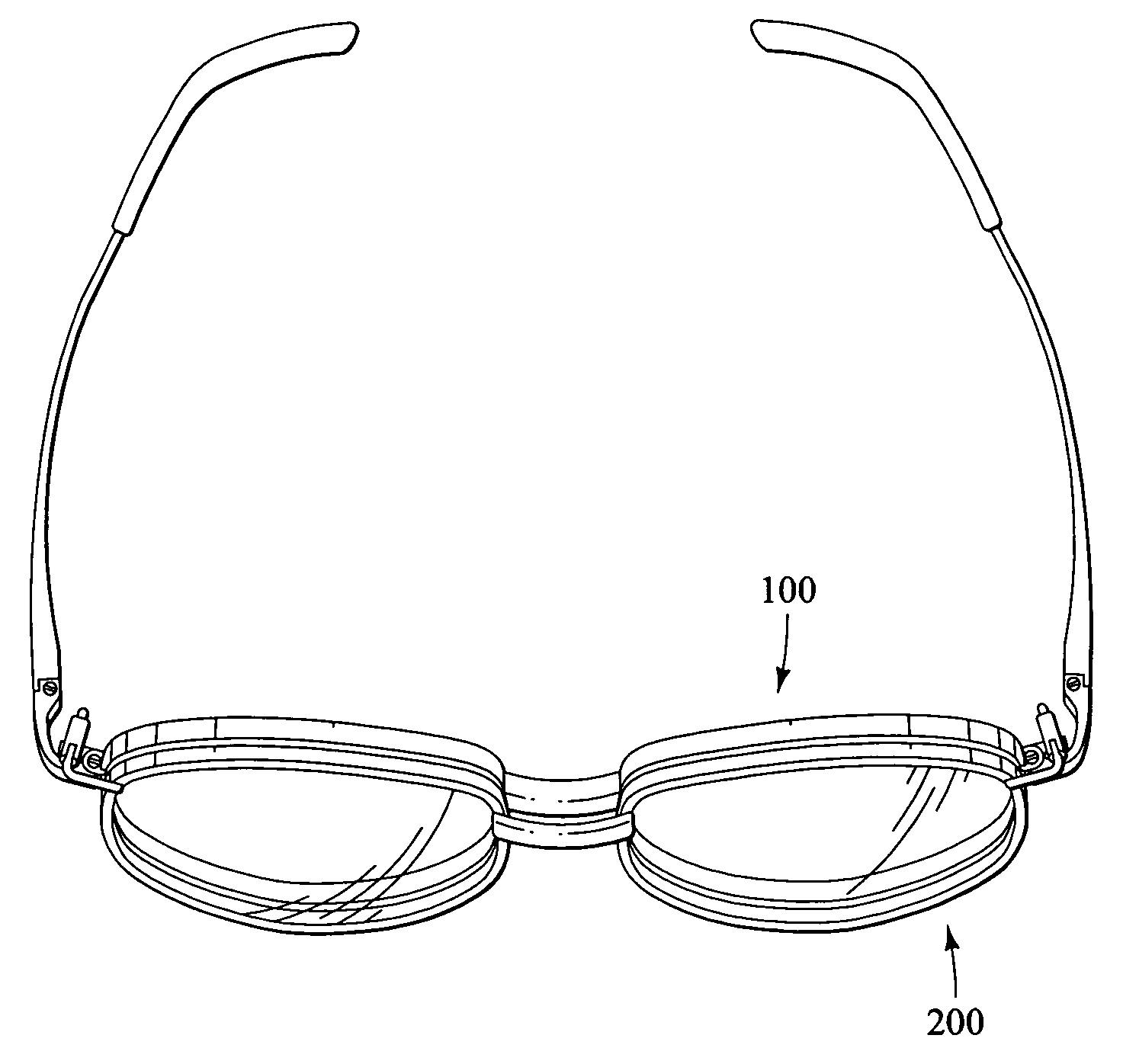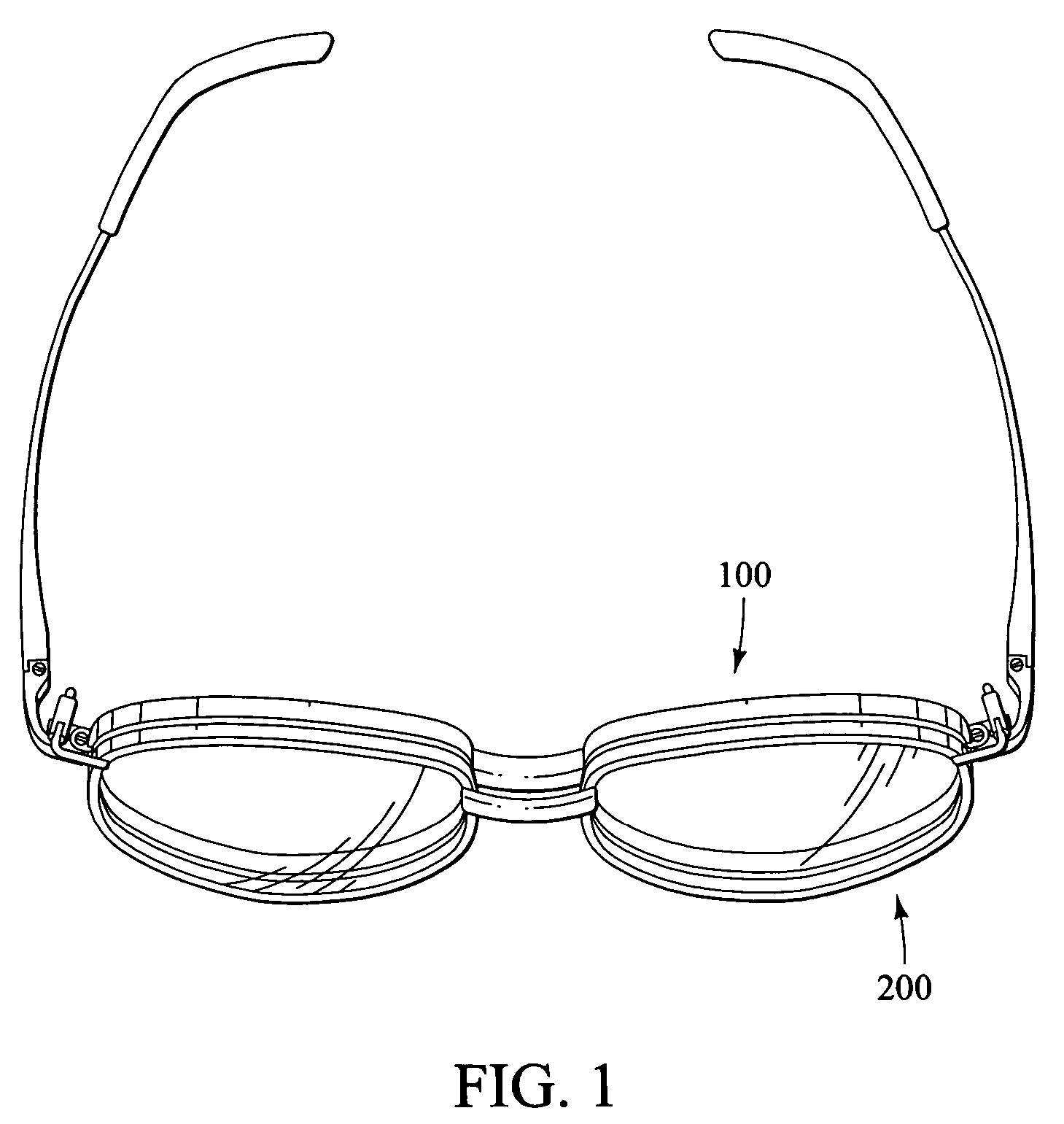Rotatable and removable auxiliary eyewear system with snap alignment
- Summary
- Abstract
- Description
- Claims
- Application Information
AI Technical Summary
Benefits of technology
Problems solved by technology
Method used
Image
Examples
second embodiment
[0064]FIG. 13 discloses a In this embodiment, retainers 232 are solid (have no magnets), and are made of magnetic material. Retainers 232 may be formed integrally from the ends of brackets 210. Retainers 232 are subject to magnetic attraction from primary magnets 122.
third embodiment
[0065]FIG. 14 discloses a In this embodiment, rear extension portions 120 are solid, (have no magnets) and are made of magnetic material. Rear extension portions 120 are subject to magnetic attraction from auxiliary magnets 232.
fourth embodiment
[0066]FIG. 15 discloses auxiliary lens assembly 200. In this somewhat simpler embodiment, auxiliary extensions 208 do not incorporate keyseat 214, rocker 220 or arm 230. Retainers 232 are attached to the ends of brackets 210. Auxiliary magnets 234 are contained in retainers 232. This configuration of auxiliary lens assembly 200 represents a known and readily available configuration. FIG. 16 discloses the complimentary primary lens assembly 100, which is the same as that of FIG. 3. FIG. 17 illustrates the auxiliary lens assembly 200 partially combined with primary lens assembly 100. FIG. 18 illustrates the full engagement of auxiliary lens assembly 200 with primary lens assembly 100. This combination demonstrates the compatibility of the primary lens assembly 100 of the present invention with existing, non-rotatable auxiliary lens assemblies 200.
PUM
 Login to View More
Login to View More Abstract
Description
Claims
Application Information
 Login to View More
Login to View More - R&D
- Intellectual Property
- Life Sciences
- Materials
- Tech Scout
- Unparalleled Data Quality
- Higher Quality Content
- 60% Fewer Hallucinations
Browse by: Latest US Patents, China's latest patents, Technical Efficacy Thesaurus, Application Domain, Technology Topic, Popular Technical Reports.
© 2025 PatSnap. All rights reserved.Legal|Privacy policy|Modern Slavery Act Transparency Statement|Sitemap|About US| Contact US: help@patsnap.com



